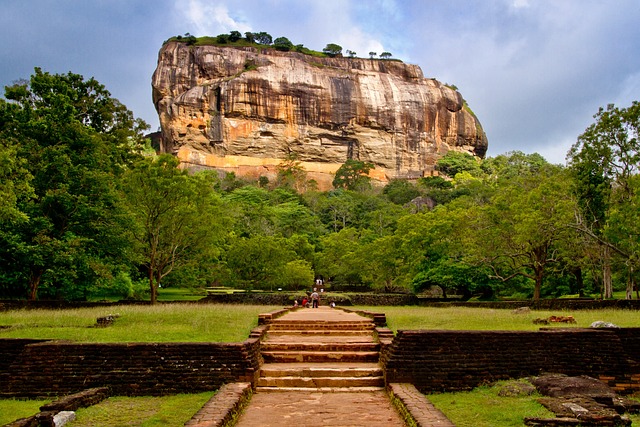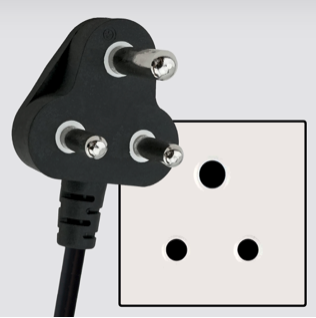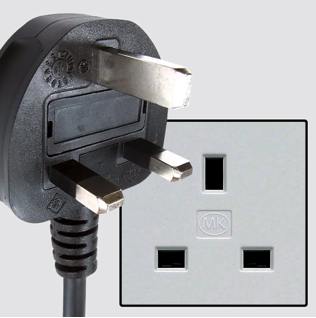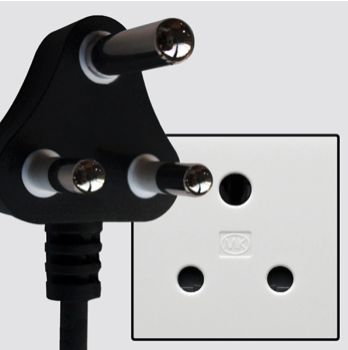Sri Lanka / ශ්රී ලංකා ප්රජාතාන්ත්රික සමාජවාදී ජනරජය / இலங்கை சனநாயக சோசலிசக் குடியரசு – Let’s explore here
What’s it like in Sri Lanka?
Sri Lanka is a beautiful, small, island country that sits in the Indian Ocean in south Asia. About half the size of England, UK, it’s a fairly flat country, although there are mountains in the south. The highest point is Mount Pidurutalagala, at 8,281 ft (2,524 m) above sea level.
It has a very long, rich and troubled history. It has no land borders, although there are Hindu myths stating that there was a land border with India until about 1500BC.
The population of Sri Lanka is around 22 million people (2022), about ¼ of whom live in the capital, Colombo.

A bit about the history of Sri Lanka
Early History and Ancient Kingdoms
Sri Lanka, formerly known as Ceylon, has a history dating back over 2,500 years. Early settlers, believed to be from northern India, established kingdoms and civilisations. The island was known for its advanced agricultural techniques, rich culture and significant Buddhist influence. Ancient Sri Lanka was home to powerful kingdoms, such as Anuradhapura and Polonnaruwa, which flourished between the 3rd century BC and the 13th century AD. The island was a hub of trade and culture in the Indian Ocean region.
Colonial Era
In the 16th century, the Portuguese arrived in Sri Lanka and established control over the coastal areas. They were followed by the Dutch in the 17th century, who replaced the Portuguese. In 1796, the British took control of Sri Lanka from the Dutch, establishing a colonial presence that lasted for almost 150 years. During this period, the British introduced tea plantations and other agricultural industries, transforming the island’s economy. The British also brought large numbers of Tamil laborers from India to work in the plantations, which contributed to ethnic tensions between the Sinhalese majority and Tamil minority.
Path to Independence
Sri Lanka gained independence from Britain on February 4, 1948, becoming a dominion within the Commonwealth. In 1972, the country became a republic and was officially named Sri Lanka. However, ethnic tensions between the Sinhalese majority and Tamil minority were a continuing issue, culminating in violent clashes and demands for greater Tamil autonomy. These tensions would lead to a prolonged civil conflict.
Civil War
The Sri Lankan Civil War began in 1983 when the Tamil Tigers, a separatist group seeking an independent Tamil state, escalated violence against the government. The war resulted in widespread suffering, with tens of thousands of casualties and displacement of people, as both sides engaged in brutal warfare. The conflict lasted for over 25 years, with the Sri Lankan government ultimately defeating the Tamil Tigers in 2009, though the war left deep divisions in the country.
Post-War Era
Since the end of the civil war, Sri Lanka has worked to rebuild its economy and infrastructure. Despite economic progress, issues surrounding reconciliation between the Sinhalese and Tamil communities, human rights concerns, and political instability continue to challenge the country. Sri Lanka’s economy has grown significantly in recent years, mainly driven by tourism, manufacturing, and agriculture, though it faces challenges such as poverty and debt.

Sri Lanka road trip
Map of Sri Lanka

We haven’t finished our planning for our road trip through Sri Lanka yet. When we do though, we’ll post it here, and in the blog.
Hopefully our journey will improve our knowledge of this intriguing and beautiful country, and enable us to meet some interesting people. We’ll be updating this page at that time – don’t forget to check back 🙂
What’s it like to drive in Sri Lanka?
They drive on the left hand side of the road in Sri Lanka. In etc main, road conditions are quite good, although are some dirt track roads. Driving standards are quite poor however.
Do you require an international driving permit in Sri Lanka?
We’ve created a dedicated page to driving abroad, which answers this question, and more, which you might find helpful.
Can you use your UK driving license when driving through LaSri Lankas?
We’ve created a dedicated page to driving abroad, which answers this question, and more, which you might find helpful.
Do I need a carnet de passages to drive in Sri Lanka?
A carnet de passages is required to overland in Sri Lanka. We’ve created a dedicated page to driving abroad, which answers this question, and more, which you might find helpful.
What currency do they use in Sri Lanka?
In Sri Lanka they use the Sri Lankan rupee. Cash is widely used. The use of credit / debit cards is not widely accepted. Travellers cheques are not readily accepted. There are many ATMs in cities and towns throughout the country.
You should make yourself aware of the amount that your bank charges you for using credit and debit cards abroad. Often credit cards are cheaper for purchasing items directly, and for withdrawing cash from ATMs.
What language do they speak in Sri Lanka?
They speak Sinhalese and Tamil in Sri Lanka. English is also widely spoken in cities and by the younger gerenations.
What time zone is Sri Lanka in?
Remember, when you’re planning your next trip to take a look at what time zone it’s in.
Do I need a visa to visit Sri Lanka?
We’ve created a dedicated, more comprehensive page on visas, which you should find helpful. Check it out!
Is wild camping legal in Sri Lanka?
No, wild camping is discouraged in the main in Sri Lanka.
What plug / socket type do they use in Sri Lanka?
In Sri Lanka they use plug / socket types D, G and M.



Health issues in Sri Lanka
Is it safe to drink water in Sri Lanka?
No, it is not safe to drink tap water in Sri Lanka. Bottled water is readily available throughout the country.
What vaccinations are required for Sri Lanka?
This NHS website is kept up to date with all relevant information on vaccinations in Sri Lanka.
Phones in Sri Lanka
What is the country calling code for Sri Lanka?
The country calling code for Sri Lanka is +94
What are the emergency phone numbers in Sri Lanka?
- The emergency number for police in Sri Lanka is: 112
- In Sri Lanka, the emergency number for ambulance is: 110
- The emergency number for fire in Sri Lanka is: 113
If you’ve got some useful info that you’d like to share, let us know!
And don’t forget to check out all the other pictures!
